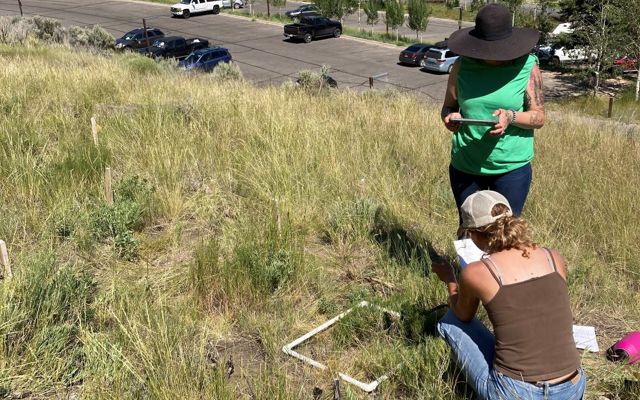Coaxing Secrets from the Sagebrush Sea’s Native Seeds
Native plants are tricky to sprout, finicky to grow and the key to saving the Sagebrush Sea in Wyoming.
Despite its sometimes harsh and barren look, the sagebrush landscape of western North America is teeming with life. Mule deer, pronghorn and sage grouse rely on this sea of sage for their survival. Ranching families depend on it for their livelihoods. The Sagebrush Sea contains important cultural sites for our Indigenous communities, and it provides countless opportunities for people to hunt and recreate.
Yet the Sagebrush Sea is disappearing at an astonishing rate: one million acres vanish each year due to wildfires, invasive species and development.
There’s still time to save what is left, but we need to act quickly. To defend and restore this vital habitat, scientists at The Nature Conservancy in Wyoming are developing and testing solutions to the most pressing challenges that native plants face across the landscape.
Fighting Invasive Plants
Invasive annual grasses such as cheatgrass crowd out the native grasses on which wildlife and livestock depend. These fast-growing invaders spread quickly, particularly in areas where fires have recently burned. As cheatgrass dries out in the summer, it becomes extremely flammable, increasing the risk of future fires and perpetuating the cycle that leads to even more cheatgrass.
Together with our partners, we are improving methods to reduce cheatgrass invasion after a wildfire. As part of the “Fire on the Mountain” project in Teton County, we are testing various aerial herbicide treatments and comparing the results against untreated control sites. Our partners in this work include the University of Wyoming Institute for Managing Annual Grasses Invading Natural Ecosystems (IMAGINE) and Teton County Weed and Pest (TCWP).
Getting Native Seeds to Grow
Disturbed areas of the Sagebrush Sea are particularly challenging to coax back to health because many of the shrubs, perennial grasses and wildflowers that are native to the area are very difficult to grow from seed. Although fully grown native plants are hardy, the tender seedlings need adequate moisture in the spring to quickly grow roots so they don’t die during summer drought.
To help sagebrush seedlings take root, we cover their seeds in a special coating that provides essential nutrients to help them grow. We helped develop this coating in partnership with Germains Seed Technology®. In addition, TNC scientists have teamed up with the Wyoming Department of Environmental Quality, U.S. Bureau of Land Management and the Office of Surface Mining Reclamation and Enforcement to test ways to hasten and increase root growth so more native seedlings survive their first summer.



We Can't Save Nature Without You
Solving the Native Seed Shortage
As challenging as it is to get native seeds to grow, potentially an even greater challenge is finding enough native seeds of enough varieties to replant in disturbed areas. We recently completed a survey that identified which native seeds are most in demand and which are the most difficult for land managers to buy commercially. Some high-priority native species are simply unavailable to purchase because there is no recorded knowledge of how to germinate the seeds.
TNC has stepped in to help solve this challenge by studying native plants in the lab to determine what environmental conditions they need to sprout. Some native plant seeds just need a period of cold, moist conditions similar to what you would expect them to experience over the winter. Others need their tough exterior shells scratched and scarred to allow water to enter the seed and induce germination. By answering some of these basic scientific questions, we can move native seeds toward commercial production and help make them available for restoration projects across Wyoming.



Though the challenges to its survival remain difficult, the Sagebrush Sea is anything but a story of inevitable loss. Through concerted, practical action to vigorously defend healthy areas that remain, restore swaths that have been degraded and invest in the science that will help people find native seeds and expertise to further expand that restoration, we can help this uniquely beautiful habitat thrive, along with people and wildlife who depend upon it. We can help this uniquely beautiful habitat thrive once more by defending the healthy areas that remain, restoring areas that have been degraded and investing in the science that will allow all those who care about the Sagebrush Sea to expand that restoration.












Download
Download our native seed survey report to learn about key stakeholders' perspectives on restoration and rehabilitation efforts in Wyoming.
DOWNLOAD




